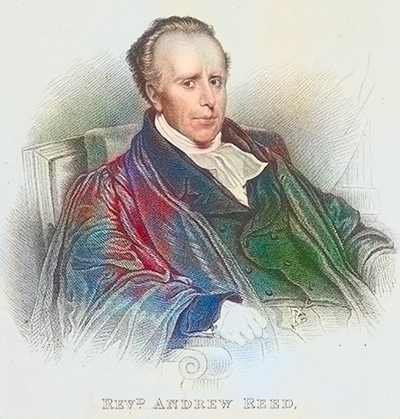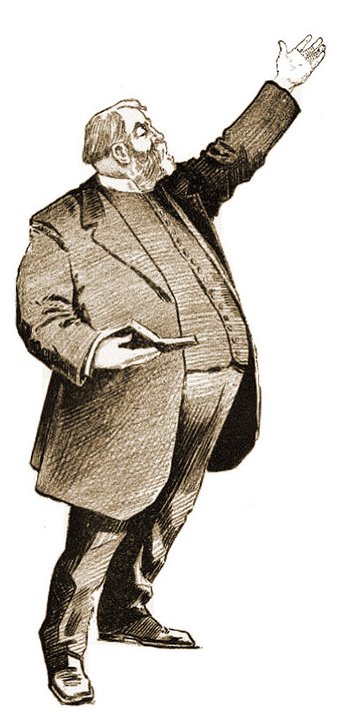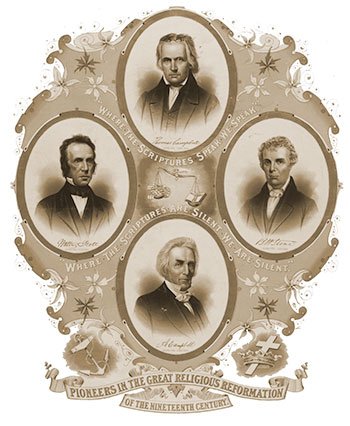1839 East London Revival

Andrew Reed
Antecedents of the East London Revival
The 1839 East London Revival was not an isolated incident. It emerged from a backdrop of religious fervor and social transformation that characterized 19th-century England. This era witnessed a growing emphasis on personal piety and social reform 1, with movements like the Clapham Sect advocating for the abolition of slavery and promoting Sunday Schools 2.
The Evangelical movement played a crucial role in shaping the religious climate, emphasizing the importance of personal conversion and spiritual renewal 3. Notably, Reverend Reed was inspired by accounts of the First Great Awakening in New England but was disappointed by the lack of detailed documentation on how those revivals were stimulated and sustained 4. This motivated him to meticulously document the steps he took to bring about the East London Revival, a practice that distinguished him from earlier revivalists.
State of Religion
Prior to 1839, East London was a religiously diverse area, with a mix of Christian denominations and other faiths 5. However, there was a sense of spiritual decline and apathy among many Christians 4. Congregational members actively engaged in community outreach, opening their homes for fellowship with those outside the faith and diligently praying for and visiting the sick 4. Reverend Andrew Reed, deeply concerned about this state of affairs, sought to awaken the spiritual consciousness of his congregation and the wider community 4.
Specific Prayers
While specific prayers from the lead-up to the revival are not extensively documented in the available material, it is evident that prayer played a central role in the revival’s genesis. Reverend Reed emphasized the importance of prayer, both individual and collective, as a means of seeking personal revival and the conversion of the lost 4. He challenged his deacons and congregation to dedicate specific times for prayer, fostering a culture of seeking God’s intervention 4.
How the 1839 East London Revival Started
The revival’s spark can be traced back to a prayer meeting initiated by young men at a nearby college who specifically prayed for revival among the students 6. This fervor spread to Wycliffe Chapel, where Reverend Reed began a series of prayer meetings and sermons focused on spiritual renewal. He initiated a special prayer meeting with his deacons, dividing them into small groups to pray for three hours 4.
The following Sunday, he preached on the importance of secret prayer, creating a different atmosphere in the service 4. He then challenged the congregation to set aside an hour each week for personal revival and the conversion of others 4.
To further inspire and motivate his congregation, Reed delivered a series of ten sermons on revival 4. He also met with smaller groups within the congregation, including the Christian Instruction Society, Sunday School teachers, and intercessors, to encourage them and instill hope for revival 4. Recognizing the importance of personal connection, home visitation was heavily relied upon to build relationships and minister to individuals 4.
The revival gained momentum with special services scheduled, beginning with New Year’s Eve. On Thursday, January 3rd, a prayer meeting was held for the “fathers” of the congregation, as the evening sermon was to focus on young people. The service had a profound impact, awakening many young people to their spiritual need. Following the service, the young people were invited to a room where Reed prayed and exhorted them.
Many were moved to tears, and at least 200 young people gave their hearts to God that night 4. This event marked a significant turning point in the revival’s early stages.
Reed’s approach to preaching also played a crucial role. He refused to “flatter the sinner” and instead focused on bringing them “to a state of deep and willing humiliation.” His sermons were carefully planned to awaken the consciousness of both believers and non-believers to their need for revival and conversion 4.
Major Leaders and Their Roles
Reverend Andrew Reed was the driving force behind the 1839 East London Revival. He was a visionary leader who recognized the need for spiritual awakening in his community and took concrete steps to bring it about. His meticulous planning, emphasis on prayer, and engaging sermons played a crucial role in igniting the revival fires 4.
Reed identified two primary reasons why more ministers did not actively pursue revival: firstly, some revivals had descended into “fearful extravagance,” causing concern among the more cautious; secondly, revivals were often viewed as mere spectacles rather than examples to be imitated 4. Reed’s approach, characterized by careful planning and a focus on genuine spiritual transformation, aimed to address these concerns.
Churches Involved
While the revival was centered at Wycliffe Chapel Congregational Church, its impact extended beyond the walls of a single church. The revival sparked a renewed interest in religion and influenced other churches in the area. The increased attendance at Wycliffe Chapel and the growing number of converts inspired other congregations to seek similar spiritual renewal 4. Notably, the converts at Wycliffe Chapel included individuals from a wide range of ages, from under 14 to 70 years old 4.
Experiences and Manifestations of the Holy Spirit
The revival brought about a profound transformation in the lives of many individuals. People experienced a renewed sense of faith, a deeper connection with God, and a commitment to live a more Christ-centered life. The revival services were characterized by an atmosphere of intense spiritual fervor 4, with many experiencing emotional and spiritual breakthroughs.
The revival was marked by various manifestations of the Holy Spirit. People experienced conviction of sin, a desire for repentance, and a newfound joy in their faith. The revival services were often filled with emotional expressions of faith, including tears, cries of repentance, and expressions of praise 4.
Place of Prayer
The primary place of prayer during the revival was Wycliffe Chapel Congregational Church. The church served as a hub for prayer meetings, revival services, and gatherings for spiritual encouragement 4. However, prayer was not confined to the church building. Rev. Reed encouraged personal prayer in homes and emphasized the importance of a culture of prayer throughout the community 4.
Immediate and Lasting Results
The immediate results of the revival were significant. The revival continued through June, when Reed’s health, and that of one of the deacons, began to suffer, requiring them to take 10 days off to recuperate 4. During this period, over 300 people were converted, and another 200 became members of Wycliffe Chapel 4. An additional 100 were believed to have been converted but had not yet formally solidified their faith 4.
The revival also led to an increase in biblical knowledge and ministry within the congregation 4. Many who turned to Christ during this time were first-time converts who professed their faith after hearing the Gospel for the first time 4. It is noteworthy that the largest numbers who turned to Christ came from the younger generation 4, suggesting that the revival had a particular impact on young people in East London.
The lasting results of the revival were equally profound. The revival instilled a deeper sense of faith and commitment among Christians in East London. It also led to the establishment of various institutions that served the community, such as orphanages, asylums, and Sunday Schools 4. Reed was instrumental in the formation of many institutions, including the London Orphan Asylum, the Infant Orphan Asylum, the Asylum for Fatherless Children, the Asylum for Idiots, the Royal Hospital for Incurables, the Eastern Counties Asylum for Idiots, and the East London Sunday School 4.
The revival’s emphasis on social reform contributed to a greater awareness of social issues and inspired efforts to address poverty and injustice. The revival had a significant impact on the community, with around 14 ministries in operation, including numerous schools and educational efforts for all ages, a library, prison ministry, ministry for young mothers, ministry for young men, and ministry for the poor 4.
| Outcome | Number |
| Converts | 300+ |
| New Church Members | 200 |
| Ministries in Operation | 14 |
Context and Relationship to Other Revivals
The 1839 East London Revival occurred within a broader context of religious awakenings in the 19th century. It was part of a wave of revivals that swept through Europe and North America, including the Second Great Awakening in the United States 7. These revivals shared a common emphasis on personal conversion, spiritual renewal, and social reform.
The rapid growth and social changes in London during that period 8 likely contributed to the revival’s impact. The influx of people from different backgrounds and the challenges of urban life may have created a sense of spiritual seeking and a receptiveness to the revival’s message.
Relationship to Other Revivals
The East London Revival was not an isolated event but rather part of a broader religious awakening that was occurring in various parts of the world. One notable contemporary revival was the Kilsyth Revival in Scotland in 1839 9. This revival, like the one in East London, saw a significant number of conversions and a renewed emphasis on spiritual life. The simultaneous occurrence of these revivals suggests a broader movement of the Holy Spirit and a heightened spiritual awareness during this period.
Takeaways and Conclusion
The 1839 East London Revival offers valuable lessons for Christians today. It highlights the importance of prayer, both individual and collective, in seeking spiritual awakening. It also emphasizes the role of strong leadership, clear preaching, and a commitment to social reform in bringing about revival.
The revival’s lasting impact on East London demonstrates the transformative power of religious awakenings. It shows how revivals can not only revitalize individual faith but also inspire positive change in communities. The 1839 East London Revival serves as a reminder of the importance of seeking spiritual renewal and working towards a more just and compassionate society. This revival holds a significant place in the history of Christianity in England, demonstrating the power of the Gospel to transform individuals and communities. Its emphasis on prayer, personal conversion, and social action continues to resonate with Christians today.
Chronological Timeline
While a precise day-by-day account is unavailable, the following timeline summarizes key events of the 1839 East London Revival:
- October 1838: Reed initiates a series of prayer meetings and sermons focused on revival.
- New Year’s Eve 1838: Special services begin, marking the start of the revival.
- January 3, 1839: Prayer meeting for the “fathers” of the congregation, followed by an impactful service for young people, with many conversions.
- March 1839: Revival services continue with increased fervor.
- Good Friday 1839: A significant day of prayer and church services, with a large number of new church members.
- June 1839: The revival continues until Rev. Reed and a deacon require time off due to health concerns.
This timeline provides a general overview of the revival’s progression.
Works cited
- 10. Religion and Reform | THE AMERICAN YAWP, accessed on December 16, 2024, http://www.americanyawp.com/text/10-religion-and-reform/
- London’s Revival History – London Prayer, accessed on December 16, 2024, https://londonprayer.com/resources/london-revival-history/
- The Cambridge Camden Society and the Ecclesiological Society – The Victorian Web, accessed on December 16, 2024, https://victorianweb.org/religion/eccles.html
- 1839 East London Revival – BEAUTIFUL FEETBEAUTIFUL FEET, accessed on December 16, 2024, https://romans1015.com/1839-east-london-revival/
- London (North & East) – England’s Christian Heritage, accessed on December 16, 2024, https://englandschristianheritage.org.uk/london-north-east/
- romans1015.com, accessed on December 16, 2024, https://romans1015.com/1839-east-london-revival/#:~:text=%E2%96%BA%20Some%20of%20the%20young,and%20apathetic%20Christians%20came%20alive.
- Charles G. Finney: How Theology Affects Understanding of Revival – Banner of Truth, accessed on December 16, 2024, https://banneroftruth.org/us/resources/articles/2007/charles-g-finney-how-theology-affects-understanding-of-revival/
- 19th-century London – Wikipedia, accessed on December 16, 2024, https://en.wikipedia.org/wiki/19th-century_London
9. Evangelical revival in Scotland – Wikipedia, accessed on December 16, 2024, https://en.wikipedia.org/wiki/Evangelical_revival_in_Scotlandhebrides-revival/



